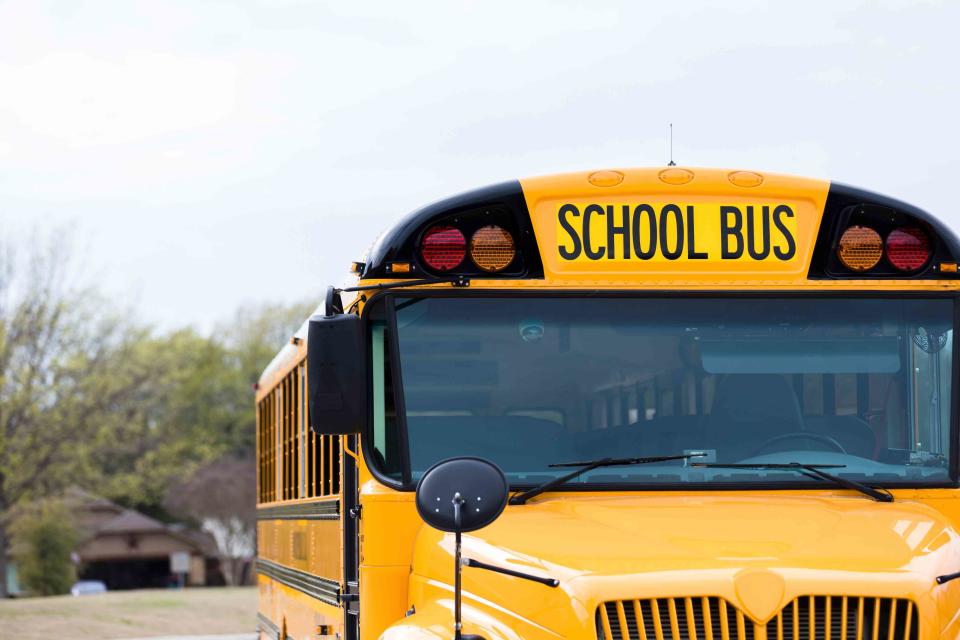What To Know About President Biden’s Clean School Bus Program
- Oops!Something went wrong.Please try again later.
The Biden Administration announced $1 billion in awards for electric school buses. Here's what parents need to know.

Getty Images/SDI Productions
Fact checked by Sarah Scott
Just as students are getting back into the swing of things post winter break, the U.S. Environmental Protection Agency (EPA) announced 67 recipients of the EPA’s first Clean School Bus Program’s Grants Competition. The awards were possible thanks to President Joe Biden’s Investing in America initiative, and will allow for more than 2,700 school buses in 280 school districts serving over seven million students.
“It’s an exciting day for us to be able to announce this $1 billion, which will be a shot in the arm to get clean school buses to every community, sooner, rather than later,” Michael Regan, Director of the EPA, tells Parents.
Regan notes President Biden had prepared by speaking with parents, school bus drivers, teachers and, school administrators, stressing that this program will decrease the incidences of student absences due to asthma and other related respiratory distress. The program grants will replace carbon-emitting buses with electric or low-carbon vehicles. The aim is to reduce toxins emitted from buses running on older diesel engines that “hamper our kids’ and drivers’ ability to breathe clean air,” says Regan, and, in turn, will help decrease youth respiratory illnesses nationwide.
The U.S. transportation sector has the most significant levels of greenhouse gas emissions of all sectors nationwide. By taking carbon-emitting buses off the road, the administration is aiming for an impact to decrease carbon footprints while increasing health outcomes. “As part of our work to tackle the climate crisis, the historic funding we are announcing today is an investment in our children, their health, and their education,” said Vice President Kamala Harris in a press release.
In a previous interview with Parents, the Vice President said the program will help fight environmental racism. For example, one study shows low-income neighborhoods and communities of color are exposed to nitrogen dioxide pollution an average of 28% more than higher-income and majority White neighborhoods. That is mainly due to low-income neighborhoods and communities of color being near trucking routes on major roadways.
In the inaugural round of bipartisan funding, 86% of the applicants represent rural, disadvantaged, and Tribal communities across 37 states. All applicants submitted strong plans on resource distribution for their buses and corresponding school districts, and will work with their regional EPA project officers to finalize plans and purchase new buses or infrastructures.
“We’re just getting started,” says Regan, noting $5 billion has been allotted to this program, with $1 billion of funding last year, $1 billion funding this year, and $3 more billion to go. “The best is yet to come.”
This program came about through numerous public-private partnerships with U.S. manufacturing companies and was the culmination of planning and leadership designed to support a new wave of union jobs in electrical vehicle production domestically.
While it's clear how the Clean School Bus Program will contribute to advancing environmental justice through emissions reduction, the picture becomes far more complicated when assessing the impact of increasing domestic mining. Lithium is just one of the minerals necessary to run an electric vehicle, and many of these minerals are located in or near Tribal lands of sacred and cultural importance. Disputes rage on as Tribes are currently suing to stop the creation of proposed mines, such as a proposed lithium mine in Thacker Pass, located on the border of Nevada and Oregon.
When asked how Indigenous communities fit into the cornerstone of Biden’s climate agenda, Regan shares the President is thinking through the lens of leaving no one behind. “In terms of environmental justice, it's about ensuring that no community is impacted disproportionately by any of the activities or any of the programs or opportunities that we pursue.”
The administration is aiming for a “holistic” approach to avoid environmental degradation. “We are tightening down on environmental regulations and policies to ensure that we protect those communities,” says Regan, “that we protect the environment while pursuing advanced technologies that will reduce harms and hazards that our communities are facing and that are impacting the planet.”
For more Parents news, make sure to sign up for our newsletter!
Read the original article on Parents.

